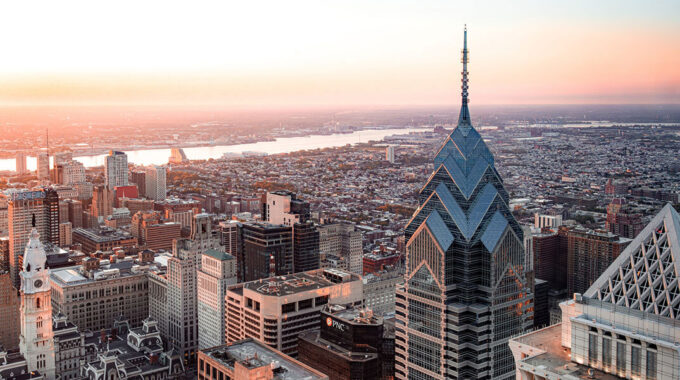SFR Analysis Summary: Philadelphia, PA

Philadelphia’s population has experienced steady growth in recent years, fueled by an influx of millennials and newcomers attracted to the city’s thriving job market, renowned universities, vibrant arts scene, and historic allure. This demographic surge has created a heightened demand for quality rental properties, particularly in revitalized neighborhoods. Simultaneously, the city has garnered attention from major corporations like Comcast, Aramark, and Five Below, highlighting its strategic location and business-friendly environment.
In this article, we will take a deep dive into Philadelphia’s strengthening real estate fundamentals, examining key indicators such as rental rates, occupancy rates, and investment potential. For investors seeking alternatives to overheated coastal markets, Philadelphia presents an appealing combination of affordability, robust cash flow prospects, and long-term growth potential. Insights from John Burns’ Single-Family Rental Analysis and Forecast Summary further emphasize Philadelphia’s prominence, ranking the Philadelphia, PA-NJ-DE-MD (MSA) as the third-best market for renter-occupied single-family homes among a diverse range of cities. We will explore this summary in detail, focusing on the Single-Family Rent Index, apartment rent growth, and employment trends within the Philadelphia, PA-NJ-DE-MD (MSA).
SFR Index Growth Rate
The SFR Index Growth Rate is a critical metric for assessing the health and potential of the single-family rental market in a specific location. In the case of Philadelphia, PA-NJ-DE-MD (MSA), the SFR Index Growth Rate has exhibited steady and consistent growth over the past several years. As reported by the John Burns Single-Family Rental Analysis and Forecast Summary, the current median rent stands at $1,663, reflecting a noteworthy year-over-year growth rate of 3.9%. This rental growth can be attributed to a combination of factors, including population expansion, a robust job market, presence of prestigious universities, and a thriving arts and culture scene.
Additionally, the recent tax reassessments which has resulted in higher property taxes for landlords, has led to rent increases as property owners seek to cover these additional costs. Lastly, while historically, housing prices and rents in Philadelphia have been lower than those in other major cities, recent years have witnessed a shift, with rising prices prompting more individuals to choose renting over homeownership, further fueling the demand for rental properties in the city.
Apartment Rent Growth
While our primary focus of our analysis is on single-family rentals, it is essential to consider apartment rent growth’s broader impact on the real estate market in the Philadelphia, PA-NJ-DE-MD (MSA). Apartment rents have surged at a rate of 4.3% YOY, reaching a median rent of $1,792. This rapid growth can be attributed to the city’s decade-long population expansion, driven by a thriving job market, rich cultural offerings, and a relatively affordable cost of living, attracting newcomers at an annual rate of 1%.
Additionally, the rise of remote work has drawn professionals to mid-sized cities like Philadelphia, intensifying competition for limited rental inventory. Higher mortgage rates have also deterred potential homebuyers, compelling them to continue renting. With over 10,000 new renter households added in the past year, landlords have gained pricing power, and experts anticipate annual rent increases of 5-6% over the next five years, well above national averages.
Employment Growth
According to the John Burns Report, Philadelphia’s job market has experienced significant growth, expanding 2.7% over the past year. Philadelphia’s job market has experienced significant growth, expanding by 2.7% in the past year, thanks to several key factors. The city’s success in attracting high-growth companies in sectors such as technology, life sciences, and advanced manufacturing, along with expansions by major corporations and institutions like Comcast, Children’s Hospital of Philadelphia, and Drexel University, has created thousands of new job opportunities. In addition, Philadelphia’s central East Coast location and affordable cost of living have drawn in new residents, further boosting the metro area’s labor force.
Initiatives like the Navy Yard redevelopment and the city’s consideration for Amazon’s HQ2 shortlist suggest ongoing job creation and economic expansion. This favorable employment outlook bodes well for real estate investment, as increased employment opportunities drive housing demand and position Philadelphia as a metro area poised for long-term growth.
Bottom Line
Philadelphia, PA-NJ-DE-MD (MSA) presents compelling opportunities for real estate investors, driven by steady population growth and a thriving job market, spurring demand for both single-family and multifamily rentals. Major corporate expansions and an ongoing influx of residents indicate sustained employment gains, and compared to other East Coast cities, Philadelphia’s affordability enhances its appeal as a resilient investment destination.
This dynamic real estate market boasts strong fundamentals, including notable rental rate increases, making it attractive for investors looking beyond overpopulated coastal markets. With solid population and job market growth, Philadelphia positions itself as a resilient and promising destination for real estate investment.
To connect with other real estate investors in the Philadelphia market, be sure to attend our upcoming Investor PopUp event hosted by CoreVest Finance on Thursday, October 26th, 2023. (https://investorpopup.com/)
Sources:
– Source: https://www.economyleague.org/resources/rising-rents-greater-philadelphia